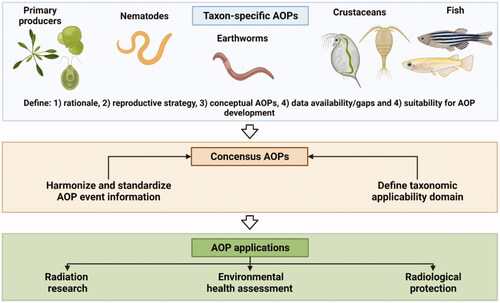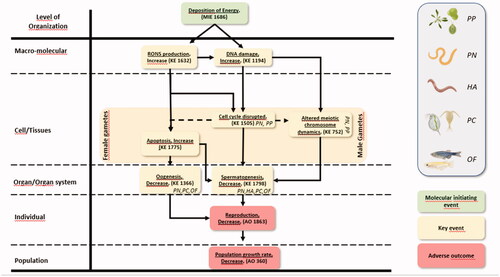Figures & data
Table 1. Definition of events, detections methods and studies used to populate a consensus Adverse Outcome Pathway Network (AOPN) for reproductive effects in environmental species.


